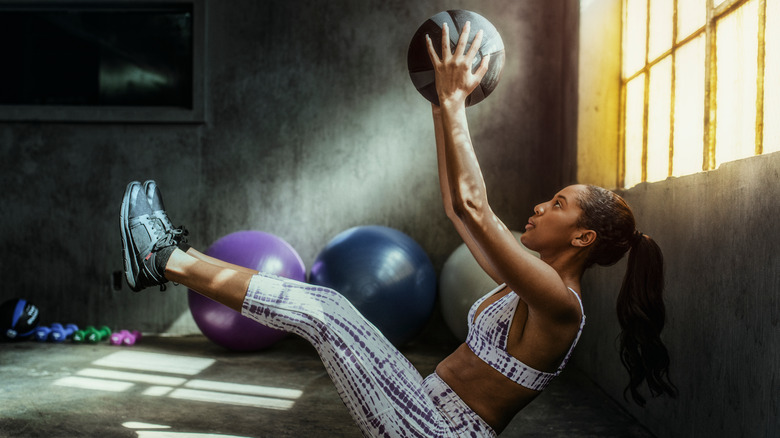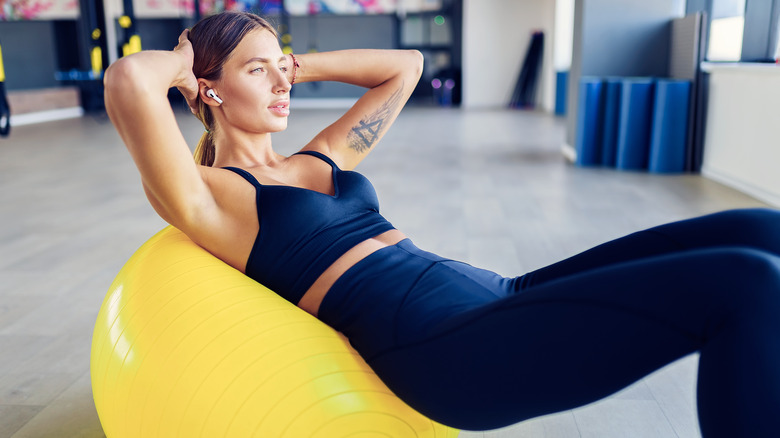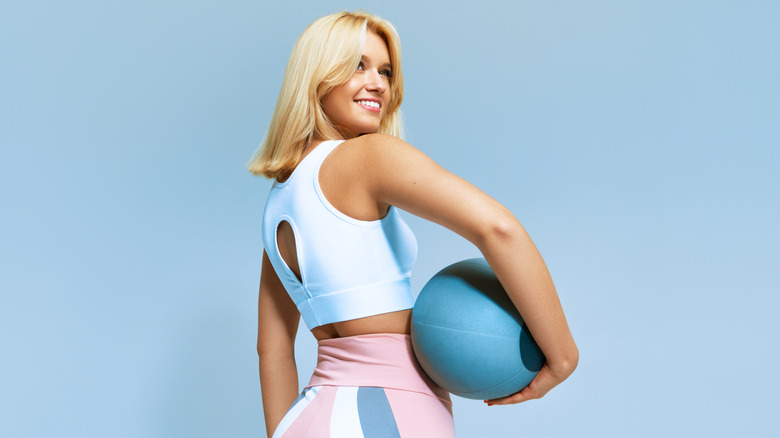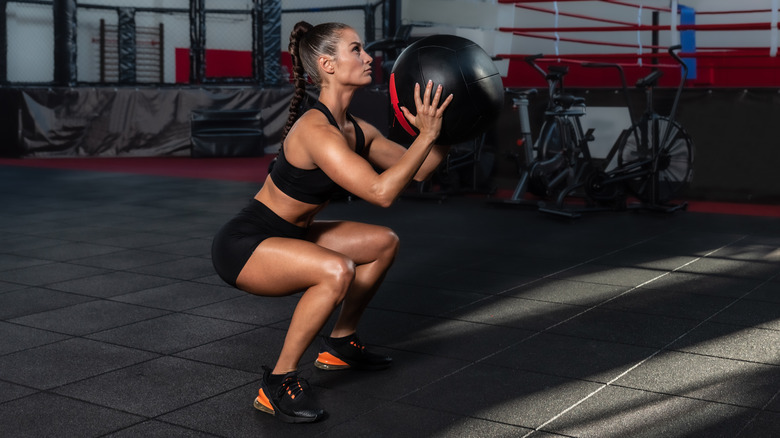Our Guide To Choosing The Right Fitness Ball For Your Exercise Needs
Some of us have a love-hate relationship with exercise. We hate how uncomfortable it can be, but we love the benefits afterward. No pain, no gain, right? Some exercises are downright unpleasant, but others can be enjoyable, thanks to objects like the medicine ball, slam ball, wall ball, and Swiss ball.
Even if you've never stepped foot in a gym before, you've probably used or at least seen one of these, but do you know the difference between them? A couple of the names give some hints about the use. For example, a slam ball is one that you slam against the floor, and a wall ball involves a wall, but the names of the other balls don't reveal as much.
In addition to the uses and benefits of each ball, there are differences in size, material, and weight. If you plan to buy a fitness ball or start using one at the gym, it's important to know these differences so you'll know which one is best for your exercise needs.
Swiss ball
The Swiss ball is the largest of the fitness balls. You may also have heard it referred to as a yoga ball or stability ball. These inflatable spheres are filled with air and are usually made of soft plastic or vinyl. They typically weigh just a few pounds, but some weigh a little more.
Just like jump ropes, fitness balls come in various sizes to accommodate different heights. Sizes typically range from 45 cm (about 17.7 inches) to 85 cm (about 33.5 inches). Unsure of what size to get? The Home Gym provides some general guidelines. If you're 4 feet 10 inches or shorter, the 45 cm ball would be best for you. If you're between 4 feet 8 inches and 5 feet 5 inches, the 55 cm size would be ideal. The 65 cm ball is typically most comfortable for users between 5 feet 6 inches and 6 feet tall. And, if you're on the taller side, between 6 feet and 6 feet 5 inches, try the 75 cm ball. But if you're even taller than that, you'll likely need an 85 cm ball.
Swiss balls are commonly used for balance and core stability exercises and seating. But you can also use them for leg, shoulder, and arm exercises. Exercises you can perform include the wall squat to build your legs and decline push-ups for a more challenging upper body workout. You can also sit on a Swiss ball while performing bicep curls or shoulder presses, which will activate the core to keep you stable through the movements.
Medicine ball
A medicine ball, or weighted ball, is much smaller than a Swiss ball, so it's not made for sitting. As the "weighted" name implies, most sizes of this ball are heavier than the Swiss ball. It's typically filled with some type of synthetic material like gel or sand, and the exterior material can be rubber, leather, plastic, or vinyl.
The weight of a medicine ball obviously helps determine its size. The heavier the ball, typically the larger the diameter. The weight can range from as light as 1 pound to all the way up to over 50 pounds. If you're using a medicine ball for the first time, how you plan to use it will dictate the size and weight to choose. Unlike Swiss balls, medicine balls are intended to be lifted or thrown and used for supplemental strength training.
You can do many exercises using a medicine ball that you would normally use dumbbells for, such as squats, lunges, and deadlifts. You can also have some fun with it by tossing it up in the air while seated or to a friend nearby. To activate your core muscles, you can do oblique twists, while shifting the ball back and forth between hips. And to activate the arms and shoulders, you can raise it while doing shoulder presses and tricep extensions.
Slam ball
A slam ball is just what it sounds like — a ball that you slam. It's similar to the medicine ball in that it's weighted, features a rubber exterior, and is filled with sand. Unlike the medicine ball that's designed for lifting movements, a slam ball is intended to be thrown on the ground with dynamic force.
The weight options of a slam ball are also similar to those of medicine balls. You can buy one that weighs just a few pounds if you're a beginner, but there are also some that weigh more than 60 pounds. Because the medicine ball is so similar to a slam ball, the terms can sometimes be used interchangeably. However, you shouldn't slam a medicine ball often, since it's not designed for repeated impact and could break.
One of the most common workouts performed with a slam ball is lifting it above your head and throwing it down on the ground as hard as you can. This exercise can help you condition your body while training you to have more explosive power in your movements. You can also do many of the same exercises you would do with a medicine ball, including squats, lunges, oblique twists, and shoulder presses.
Wall ball
A wall ball can be thought of as the medicine ball's cousin. It's a weighted ball with a synthetic leather or vinyl exterior, filled with both cotton and a weighted filler. The wall ball, however, is typically larger than the medicine ball and closer to the size of a beach ball.
As the name implies, a wall ball is made to be thrown against a wall, but in an upward direction. The typical wall ball exercise consists of standing a couple of feet away from a wall, holding the ball at chest level, squatting, and throwing it in the air against the wall. Then, you catch the ball after it bounces back, and repeat. This exercise is intended to be fast-paced, which helps improve your coordination, power, and overall conditioning. The full-body movement benefits several muscle groups, giving you an efficient workout. You can also throw the ball sideways to target your obliques or squat deeper and use an underhand motion to work your hips.




